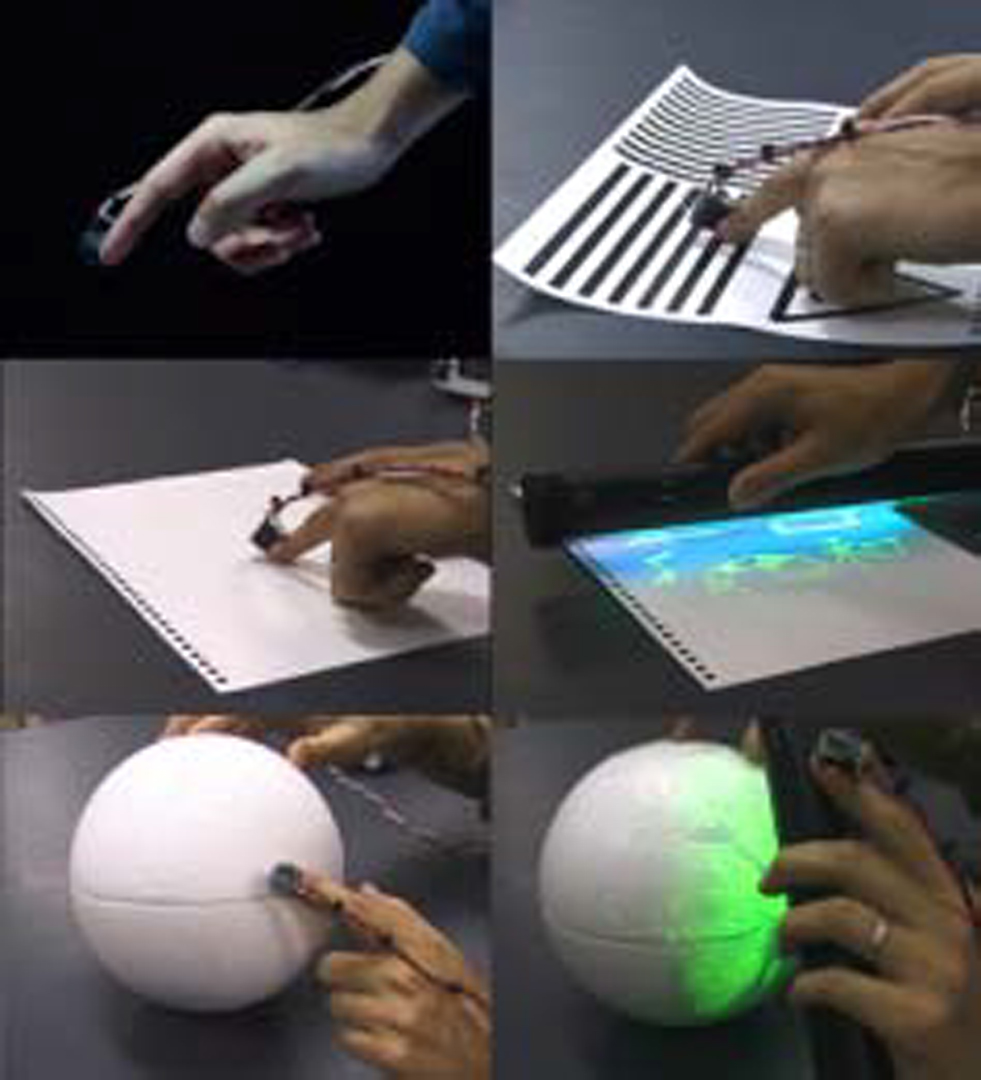“SmartFinger : Nail-Mounted Tactile Display” by Ando, Miki, Inami and Maeda
Conference:
- SIGGRAPH 2002
-
More from SIGGRAPH 2002:


Type(s):
E-Tech Type(s):
- Augmented Reality
- Wearables
Entry Number: 78
Title:
- SmartFinger : Nail-Mounted Tactile Display
Presenter(s):
Description:
Abstract
“Smart Finger” is a novel type of tactile display for Augmented Reality (AR) that is wearable, like a press-on fingernail. This device allows the user to feel various textures while tracing his or her fingers along smooth objects. This wearable AR interface can supplement bump mapping information to real objects.
1 Introduction
The “SmartFinger” is a new type of tactile display for AR which is worn on the nail side of the finger. It does not inhibit our tactile sensation, since the ball of the finger is naked and we can feel the environment directly. The absence of any material between the object and the finger is a critical aspect of this design. The “SmartFinger” can provide extra tactile sensations. For example, someone wearing this small device on his or her nail can touch a drawing on a flat sheet of paper and feel a virtual edge along the drawing’s line, and virtual roughness from its texture pattern. This is a wearable device for AR, which adds bump mapping information to real surface objects using existing printing techniques.
2 Exposition
We propose a small, wearable tactile display composed of three components: (1) photodetectors to measure the changing environment beneath the finger in real-time, (2) a sensor to measure change in the fingernail’s color from the nail side and detect the presence of external force, and (3) a “voice coil” to generate vibration on the nail, in order to realize various tactile sensations corresponding to these two types of sensory information.
3 Future Work
This research is part of The Parasitic Humanoid (PH) project to develop wearable robots that model nonverbal human behavior. A user of PH should be able to obtain data and analyze the results without suffering any inconvenience in daily life. To realize such a comfortably wearable PH, we need to develop measurement devices that don’t interfere with human behavior. The SmartFinger fits this design criterion.
Of course, it can also be used as a hands-free pointing device with feedback. For example, since visually impaired people make extensive use of their tactile sense, they can use the device as a touch panel to detect information from a computer display.
Other Information:
References
T. Nojima, M. Inami, Y Kawabuchi, T. Maeda, K. Mabuchi and S.
Tachi, “An Interface for Touching the Interface”, ACM
SIGGRAPH 2001 Conference Abstracts and Applications,
p.125, 2001
Mascaro S. and Asada H., 2001, “Photoplethysmograph
Fingernail Sensors for Measuring Finger Forces Without Haptic
Obstruction,” IEEE Transactions on Robotics and Automation,
Vol. 17, No. 5, pp. 698-708
T. Maeda, H. Ando, J. Watanabe, Y. Nonura and T. Miki, “A
behavior modeling with wearable robotics “The study of
Parasitic Humanoid (VI)”, The 6th VRSJ Annual Conference,
pp. 153-154 (Japanese)
Keyword(s):
- tactile display
- bump mapping
- wearable device
- SmartTool
- parasitic humanoid
Acknowledgements:
Acknowledgement: This work is partially funded by a research
grant from PRESTO, Japan Science and Technology Corporation
(JST).





